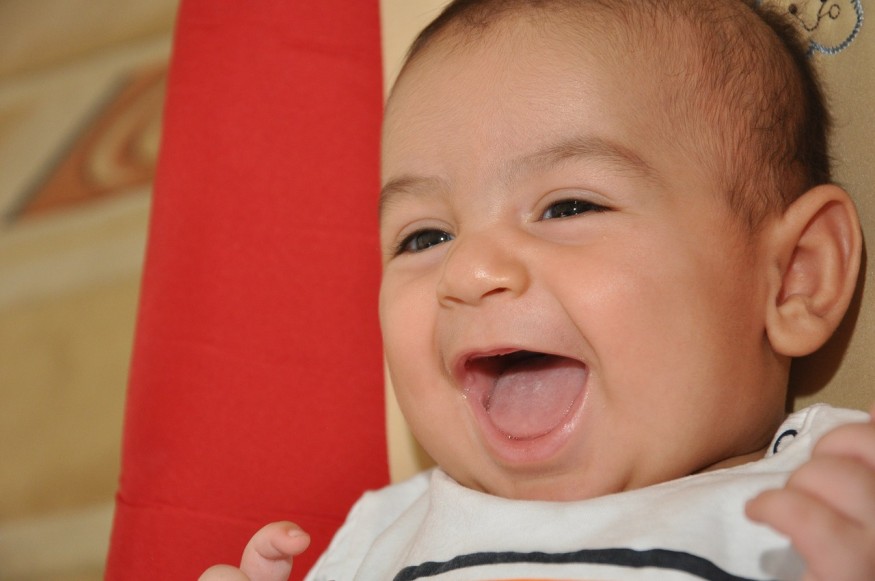A recently-published study showed that humans' laughing pattern, particularly infants, is similar to chimpanzees'.
A CNN report specified that according to cognitive psychology associate professor Mariska Kret, from Leiden University in the Netherlands, human adults mainly laugh while they are exhaling, whereas infants and chimps and great apes are while both inhaling and exhaling.
First, she explained, adults are inhaling, then producing sounds in short bursts, beginning loud, and then fading out. Reader in a comparative psychology Marina Davila-Ross, from the University of Portsmouth in England, who was not part of the research, said the ape-type is harder to describe although there is an "alternation huh-ha-huh-ha."
She added that infant laughter is not unnecessarily akin to that of all great ape species, only evolutionary closest to humans like bonobos and chimpanzees. Davila-Ross elaborated, it seems to reflect that laughter is, to some degree, naturally deeply grounded.
Originally, Kret found this phenomenon while participating in a talk by well-known primatologist Jan van Hooff with a friend.
When van Hoof said apes are laughing while inhaling and exhaling, the friend of Kret presented a video of her baby laughing similarly.
ALSO READ : 5 Reasons Why You Should Learn a Second Language

Infants' Laughter Like Apes'
To test if babies are laughing like apes, Kret collected audio clips of humans aged three to 18 months old laughing and asked listeners to rate the percentage of the laughter in the recording was produced from inhalation against exhalation.
A similar US Today Life report specified that as a control, the study authors also included five audio clips of adults laughing. Following two rounds which included at least 100 listeners each round, the outcomes were in.
People could determine that infants laughed both while breathing in and breathing out, while adults mainly laughed during exhalation.
To ensure accurate results, Krethad expert listeners examine the sound bites, and their findings were aligned with those of the beginners.
Laughter Produced from Exhalation
The study authors also had listeners rate which sounds were most appealing, not to mention contagious. Results of the study, The ontogeny of human laughter, published in Biology Letters, showed the more than the laughter was created through exhalation, the more people would perceive it as positive.
The study investigators verified this result when they performed another experiment and asked a new group of listeners to rate how favorably they perceived the laughter minus being informed of breathing patterns. This new set also discovered exhaling laughter to be more pleasing.
Laughter made through exhalation tends to be more controlled, not to mention louder, noted Kret, which she explained, makes it simpler for babies to communicate that they are having fun and would want to continue playing.
Older infants involved in the research also produced more exhaling laughter compared to the younger ones. This could be because as infants grow up, they learn laughter's communicative function, and parents see that the infant is actively attempting to convey a clear message, explained Kret.
Experimenting Other Laughing Apes
According to Davila-Ross, it was surprising that the airflow linked to laughter is changing as an infant grows older.
She added it would actually be interesting to find out if such changes can be seen for other nonverbal vocalizations of humans.
Meanwhile, Kret said, in future studies, she's hoping to repeat her experiment with other vocalizations like crying for one.
Wild 104.9 reported that she is presently running other laughter experiments, including gorillas, orangutans, and humans, to find out if they change the sound of their laughter to copy the laughter of those surrounding them.
Related information about baby's laughter akin to that of chimps' is shown on Inverse's YouTube video below:
RELATED ARTICLE : Babies Learn Language Better Through Baby Talk
Check out more news and information on Babies on Science Times.
© 2025 ScienceTimes.com All rights reserved. Do not reproduce without permission. The window to the world of Science Times.











